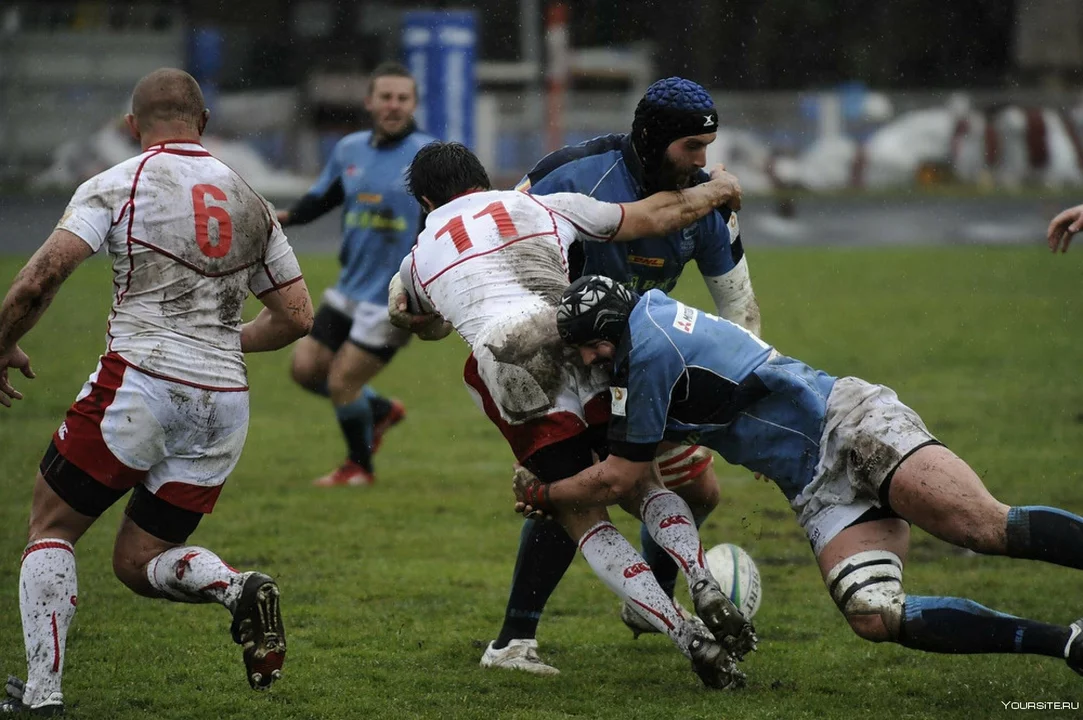
Dispelling the Myths: Rugby's Reputation for Roughness
As a fan and player of rugby for many years, I've heard countless people describe the sport as "rough" or "brutal." While it's true that rugby can be a physically demanding game, there's much more to it than meets the eye. In this section, we'll explore some common misconceptions about rugby and its perceived roughness to set the record straight.
First, let's address the issue of injuries. Many people assume that rugby is rife with serious injuries due to its physical nature. However, studies have shown that injury rates in rugby are comparable to those in other popular sports such as soccer, basketball, and American football. Additionally, rugby has a strong emphasis on player welfare and has implemented various laws and initiatives to ensure the safety of its participants.
Another common myth is that rugby players are constantly fighting each other on the field. While tensions can occasionally flare during a match, rugby places a strong emphasis on sportsmanship and respect for opponents. Players who engage in violence or unsportsmanlike conduct are penalized and can even be ejected from the game. Rugby's emphasis on camaraderie and fair play is one of the sport's most endearing qualities.
Understanding the Rules and Tackling Techniques
Rugby's rules and tackling techniques are designed to minimize the risk of injury while still allowing for a dynamic and exciting game. For those unfamiliar with the sport, it's important to have a basic understanding of these rules and techniques to appreciate how they contribute to the flow and safety of the game.
In rugby, players must tackle opponents below the shoulders and attempt to wrap their arms around the ball carrier. This ensures that tackles are controlled and significantly reduces the risk of head and neck injuries. Additionally, players are encouraged to lead with their shoulder rather than their head when initiating a tackle, further reducing the likelihood of serious injury.
Aside from tackling, there are numerous other rules in place to promote player safety. For example, players are not allowed to jump or dive into tackles, making it less likely for them to collide with opponents at dangerous angles. Moreover, the game's strict rules regarding scrums, rucks, and mauls help to prevent injuries in these high-contact situations.
Protective Gear and Safety Measures
Rugby players wear a variety of protective gear to help mitigate the risk of injury during matches and training sessions. While it may not be as extensive as the equipment worn in other contact sports, this gear is designed to provide adequate protection while still allowing for freedom of movement and comfort.
Some common pieces of protective gear include mouthguards, padded headgear, and shoulder pads. Mouthguards are mandatory in most rugby leagues and help protect players' teeth, gums, and jaws from impact. Padded headgear, often referred to as "scrum caps," can help reduce the risk of head injuries and lacerations, while shoulder pads provide additional cushioning in high-impact situations.
Alongside protective gear, rugby clubs and organizations often have safety measures in place to ensure player welfare. This can include access to medical staff, injury prevention programs, and concussion protocols. By prioritizing safety, rugby clubs and organizations help to dispel the myth that rugby is an inherently rough sport.
Building Physical and Mental Resilience
While rugby is a physically demanding sport, it also offers numerous benefits to those who play it. One of the most significant advantages of rugby is the development of physical and mental resilience. By participating in a sport that requires strength, endurance, and mental toughness, rugby players learn to push themselves and overcome challenges on and off the field.
Rugby helps players build strong muscles, improve cardiovascular fitness, and develop agility and coordination. The sport also promotes teamwork, communication, and leadership skills, which are valuable in many aspects of life. Furthermore, the camaraderie and sense of belonging that comes from being part of a rugby team can have a positive impact on players' mental health and overall well-being.
It's also worth noting that the physicality of rugby can actually serve as a stress reliever for many players. The opportunity to engage in controlled, full-contact competition can be an effective outlet for releasing tension and pent-up energy in a safe and structured environment.
The Beauty and Appeal of Rugby
By breaking down the misconceptions surrounding rugby's roughness and highlighting the sport's safety measures, we can begin to appreciate the beauty and appeal of rugby. At its core, rugby is a game that values teamwork, skill, and sportsmanship. The physicality of the sport is just one aspect of a much more complex and rewarding game.
Rugby's unique combination of speed, power, and strategy makes it an exhilarating sport to watch and play. The sense of community and camaraderie among players and fans is something truly special, transcending national and cultural boundaries. In this light, it becomes clear that rugby is much more than just a "rough" sport – it's a global phenomenon that brings people together and challenges them to be their best selves.
Comments